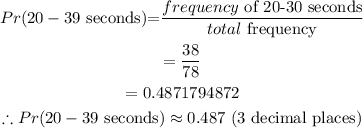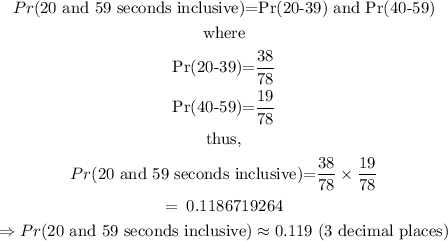Solution:
The probability of an event is expressed as

Given the survey as shown below:
a) Probability that the chosen TV commercial will last 20 to 39 seconds.
Thus,

Hence, the probability that the chosen TV commercial will last 20 to 39 seconds is 0.487.
b) Probability that the chosen TV commercial will last more than a minute.
Thus,

Hence, the probability that the chosen TV commercial will last more than a minute.is 0.051.
c) Probability that the chosen TV commercial will last between 20 and 59 seconds inclusive.
Thus,

Hence, the probability that the chosen TV commercial will last between 20 and 59 seconds inclusive is 0.119.